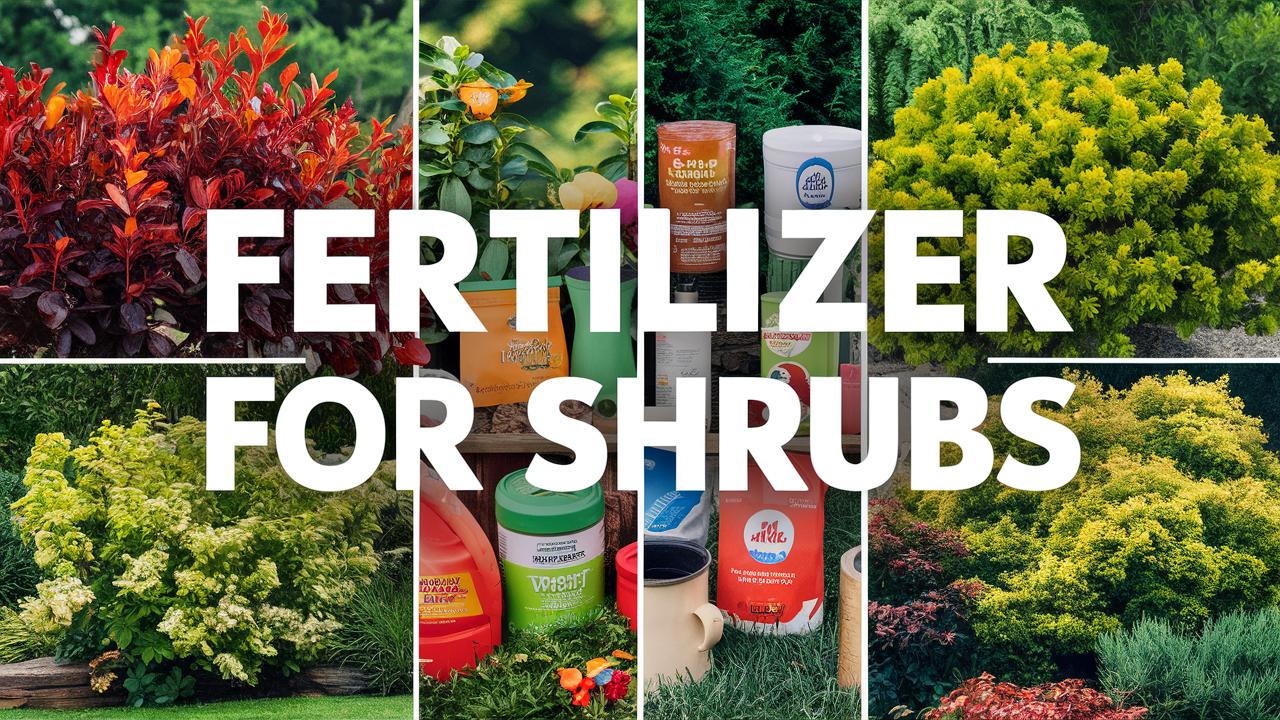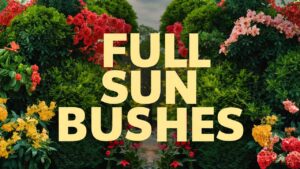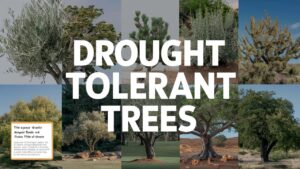This post will guide you through the various factors to consider when selecting the right fertilizer for your shrubs, helping you create a lush, vibrant environment.
Fertilizer For Shrubs
| Image | Name | Rating | Shop |
|---|---|---|---|
 | BioAdvanced Tree & Shrub Protect & Feed |  | |
 | Miracle-Gro Shake ‘N Feed |  | |
 | SimplyGro Fertilizer Spike |  |
BioAdvanced Tree & Shrub Protect & Feed
BioAdvanced 12 Month Tree and Shrub Protect and Feed is a reliable option for fertilizing and protecting shrubs from various insects. With its long-lasting formula, this product kills listed insects and prevents new infestations for up to a year with just one application.
This granular fertilizer serves as an all-in-one solution by providing plant food that improves the health of your trees and shrubs, starting from the roots and extending all the way to the leaves. The BioAdvanced product also contains insect-killing properties, effectively ridding your garden of pests such as Japanese Beetles, Emerald Ash Borers, Adelgids, Leafminers, and Aphids, making it a convenient addition to any outdoor maintenance routine.
Miracle-Gro Shake ‘N Feed
Miracle-Gro Shake ‘N Feed Flowering Trees and Shrubs Plant Food is a good pick for fertilizing acid-loving flowering shrubs. This plant food features natural ingredients like kelp, earthworm castings, bone meal, and feather meal to promote deep foliage color and blooming.
This product feeds plants for up to 3 months after application, so you can reapply every 3 months for the best results. Shake ‘N Feed is safe to use in both in-ground gardens and containers. Simply spread the fertilizer evenly around the base of your shrub or plant, then water it in – avoid contact with the trunk or foliage as this may cause damage. This product is perfect for flowering trees and shrubs looking a little extra love, and will help them maintain their lush green foliage and colorful blooms all season long.
SimplyGro Fertilizer Spike
The Tree & Shrub Fertilizer Spikes from SimplyGro is a reliable option for feeding your shrubs throughout the year. These fertilizer spikes are formulated with an 8-8-8 formula, providing all the essential nutrients for healthy growth, rich colors, and vibrant bloomers.
The best part about these fertilizer spikes is that they’re pre-measured and easy to apply – just hammer them into the ground near your shrubs and let them get to work. With a 3-month continuous feeding process, you’ll need to apply two sets per year for optimal results. Plus, with TruSpikes technology, there’s no risk of breakage or smudging, making this product hassle-free. Manufactured in the USA ensures consistent quality, making SimplyGro Tree & Shrub Fertilizer Spikes a trusted choice for gardeners.
Down to Earth Tree & Shrub Food
This all-natural fertilizer is a great choice for shrubs. Down To Earth All Natural Fertilizers Tree & Shrub Mix 4-2-4 is specifically designed for transplanting and helps promote healthy growth in young trees and shrubs.
The OMRI-listed formula encourages root development, protects against plant stresses, and helps establish a strong foundation for your shrub’s future. With ingredients like fish bone meal, corn gluten meal, and humates, this fertilizer will give your shrub the nutrients it needs to thrive in different environments. Whether you’re planting new or looking to boost existing garden life, Down To Earth Tree & Shrub Mix is worth considering.
Evergreen-tone
This product, Espoma’s Organic Evergreen-Tone fertilizer, is suitable for all types of evergreen trees and shrubs. It can be used on plants like pine, fir, spruce, juniper, azaleas, rhododendron, and camellias.
Evergreen-tone is a 4-3-4 balanced fertilizer that promotes healthy growth in established plants when applied twice a year. The ready-to-use formula makes it easy to apply without any mixing required. Additionally, being registered as an Organic Input Material by the USDA National Organics Program, this product meets all requirements for organic gardening and farming methods. If you’re looking for a reliable fertilizer option that’s safe for your plants and the environment, Espoma’s Evergreen-Tone is a good choice to consider.
Miracle-Gro Tree & Shrub Fertilizer Spikes
If you’re looking for a fertilizer that will promote vibrant color and foliage in your shrubs, we recommend trying Miracle-Gro Tree and Shrub Plant Food Spikes.
These easy-to-use spikes provide direct nutrition to the roots of your trees and shrubs, making them a great choice for deciduous, flowering, and evergreen types. As they only need to be applied once in the spring and again in the fall, it’s also a low-maintenance option that can fit into most gardening schedules. This package contains 12 spikes, which can cover 3 trees with a 4-ft drip line diameter or 1 tree with a 12-ft diameter – perfect for small to medium-sized landscapes.
How To Choose a Fertilizer For Shrubs
When nurturing the beauty and vitality of your landscape, one of your most critical tasks will be choosing the right fertilizer for your shrubs. Shrubs are often the foundation of your garden, providing structure, color, and texture. However, to ensure they thrive and enhance your outdoor space, they need the appropriate nutrients.
Understanding the Nutritional Needs of Shrubs
Before diving into the mechanics of fertilizer options, it’s crucial to understand what shrubs require nutritionally. Shrubs, like all plants, need a blend of macronutrients and micronutrients for optimal growth.
Macronutrients: The Big Three
Nitrogen (N): Essential for foliage and overall growth, nitrogen promotes robust green leaves and stems. It supports photosynthesis and overall plant vigor.
Phosphorus (P): Critical for root development and flowering, phosphorus enhances energy transfer within the plant. Healthy roots are essential for water and nutrient uptake.
Potassium (K): This nutrient strengthens plants’ cell walls, enhances drought tolerance, and contributes to overall plant hardiness. Potassium plays a vital role in the overall metabolic process.
Micronutrients: The Little Helpers
While macronutrients are vital, shrubs also require micronutrients, albeit in smaller amounts. Nutrients like iron, manganese, zinc, and boron support various functions, including photosynthesis and hormone production. Understanding your shrub’s specific requirements is essential for selecting the right fertilizer.
Assessing Soil Health
Soil Testing
Before applying any fertilizer, conduct a soil test. This essential step collects data on soil pH, nutrient content, and organic matter levels. Many local agricultural extension offices offer soil testing services. Understanding your soil’s unique characteristics allows for a targeted approach to fertilization.
Understanding Soil Type
Soil types can vary widely, and each type has different nutrient-holding capabilities. Sandy soils drain quickly and may require more frequent feeding, while clay soils retain moisture but can become compacted, affecting root health. Knowing your soil type can help determine how to amend it and which fertilizers may work best.
Types of Fertilizers for Shrubs
1. Granular Fertilizers
Granular fertilizers are a popular choice. They are easy to apply and provide a slow release of nutrients over time. Look for balanced options like a 10-10-10 N-P-K ratio, or consider specific formulations for flowering shrubs or evergreens.
2. Liquid Fertilizers
Liquid fertilizers deliver nutrients quickly, making them ideal for rapid plant response. These fertilizers can be applied directly to the soil or used as a foliar spray for an immediate nutrient boost. However, they require more frequent applications than granular fertilizers.
3. Slow-Release Fertilizers
Slow-release fertilizers gradually provide nutrients over an extended period, reducing the risk of nutrient leaching and maximizing plant uptake. They are particularly beneficial for shrubs planted in challenging environments, as they provide consistent nourishment without the risk of over-fertilization.
4. Organic Fertilizers
If you prefer an eco-friendly approach, organic fertilizers made from natural materials can enrich your soil over time, improve soil structure, and foster beneficial microorganisms. Compost, well-rotted manure, and bone meal are excellent options, promoting long-term health for your shrubs.
Fertilizer Formulations
When selecting a fertilizer, pay attention to the formulation based on the specific needs of your shrubs.
1. Balanced Fertilizers
Ideal for general use, balanced fertilizers provide a uniform mix of nitrogen, phosphorus, and potassium. These are suitable for a variety of shrubs and help maintain overall plant health.
2. Specialty Formulations
Some shrubs have unique nutrient requirements. For instance, flowering shrubs may benefit from fertilizers higher in phosphorus. On the other hand, evergreens might need an acidic fertilizer to address their specific needs. Research the requirements of your specific shrub species to find an appropriate product.
3. Start-Up Fertilizers
When planting new shrubs, consider using a start-up fertilizer that encourages root establishment. These products often have a higher phosphorus content to stimulate root growth and help your new plants settle in.
Timing Your Fertilization
When you fertilize your shrubs can significantly impact their growth.
1. Early Spring Application
Applying fertilizer in early spring as new growth begins will provide shrubs with the nutrients they need to develop thick foliage and strong roots. This is generally an ideal time to apply both granular and liquid fertilizers.
2. Mid-Summer Boost
For fast-growing shrubs, a mid-summer application can help maintain vigor during the hottest months. If you notice signs of nutrient deficiency or slow growth, this is a fantastic opportunity to give your plants a boost.
3. Late Fall Considerations
In some regions, a late fall application of fertilizer may be desirable. However, be cautious with this approach, as late applications can lead to tender new growth vulnerable to winter damage. Focus on applying fertilizers designed for this season carefully.
Reading Fertilizer Labels
Understanding the information on fertilizer packaging is essential to make informed decisions. The N-P-K ratio indicates the percentage of nitrogen, phosphorus, and potassium, respectively. Other information includes application rates, coverage area, and whether the fertilizer is designed for specific plant types.
Important Notes
Always follow the manufacturer’s instructions for application rates. Over-fertilization can harm your shrubs, leading to lush foliage with poor flowering or even plant burn. Aim for the low end of the application rate if you’re unsure, as it’s easier to add more later.
Recognizing Symptoms of Nutrient Deficiency
Understanding how to identify when your shrubs may need additional nutrients will help you become a more attentive gardener.
1. Yellowing Leaves
If the leaves of your shrub begin to yellow, particularly if they are older, it may be a sign of nitrogen deficiency. Young leaves usually stay green while the plant draws nutrients from older growth.
2. Poor Flowering
Shrubs that produce few flowers might be lacking phosphorus. If you expected summer blooms and are not seeing the usual display, consider evaluating your fertilization practices.
3. Weak Growth
Stunted or weak growth can indicate potassium deficiencies, impacting overall plant health and the ability to withstand environmental stressors.
Adjusting for Different Varieties
Each shrub species may have different fertilizer needs.
1. Deciduous vs. Evergreen Shrubs
Deciduous shrubs grow leaves in the spring and shed them in the fall; they typically require a balanced fertilizer to support the spring flush of growth. Conversely, evergreen shrubs maintain foliage year-round and often thrive with higher nitrogen content.
2. Flowering vs. Non-Flowering
Flowering shrubs often benefit from fertilizers that encourage blooming, while non-flowering shrubs might focus more on foliage growth. Always take the species’ specific needs into account when selecting a fertilizer.
Environmental Considerations
It’s important to consider the impact of fertilizers on the surrounding environment.
1. Runoff and Leaching
Apply fertilizers carefully to minimize runoff into water sources. Nutrients such as nitrogen and phosphorus can lead to algal blooms in lakes and streams, severely impacting local ecosystems. Consider using slow-release formulas to reduce the risk of leaching.
2. Organic Alternatives
If you are concerned about the environmental impact of synthetic fertilizers, consider using organic fertilizers that enhance soil health and support beneficial microorganisms. These alternatives often improve the soil structure and nutrient availability over time.
Conclusion
In summary, choosing a fertilizer for your shrubs involves understanding their nutritional needs, assessing soil health, selecting the right type and formulation, and timing applications effectively. By taking these factors into account, you will promote robust shrub growth that enhances the beauty of your landscape.








